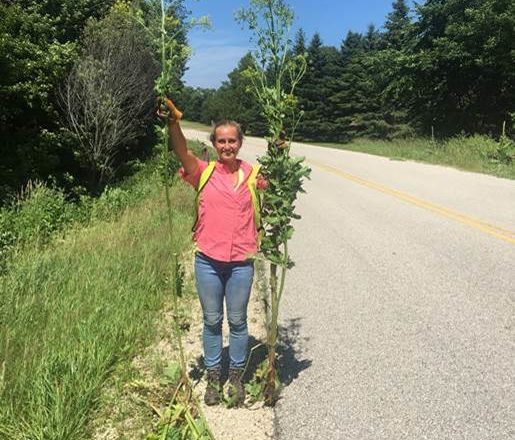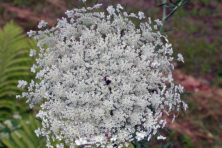Protect Your Land from Wild Parsnip
- Share
- Tweet
- Pin
- Share

You may have noticed a plant with greenish yellow follower clusters growing 4-5 feet tall along Door County’s roadside this year, more than in recent years. This plant is known as Wild Parsnip and has been in the state for nearly a century. Wild parsnip (Pastinaca sativa) is an aggressive Eurasian member of the carrot family that can invade a wide range of habitats, but it is most commonly found in grassland areas near or alongside roadsides. As widespread as this plant may be, the real danger of Wild Parsnip is in its sap. Chemicals found in Wild Parsnip sap can cause phytophotodermatitis, a light sensitive reaction on your skin. If the sap from broken stalks, leaves, or flowers contacts your skin and then is exposed to sunlight, a skin rash will result 24-48 hours later. Symptoms range from slightly reddened skin to large blisters. The blisters may produce a sensation similar to a mild to severe sunburn. With the help of grant funding from 2011-2017 the Door County Soil & Water Conservation Department (SWCD) has treated Wild Parsnip using private contractors and limited-term staff to shovel cut along right of ways and on some private properties totaling more than 60 miles of management. In recent years, grant funding has become increasingly competitive and the federal and state funding sources are in jeopardy with every budget process. More local efforts are needed to maintain and build upon the work that SWCD has conducted and keep Wild Parsnip populations in check. Wild Parsnip is fairly simple to control on your own property. The best way to control wild parsnip is early in the season with a systemic herbicide, such as glyphosate, prior to the plant flowering. Systemic herbicides move throughout the plant and kill all of the plant parts. At this time of year mowing before the plant goes to seed is a better control method. When mowing Wild Parsnip be sure to use all precautions by wearing pants, long sleeve shirts and protective eyewear. The county needs your help to mitigate the spread of Wild Parsnip and protect your family, neighbors, and community from exposure to this poisonous and dangerous plant.


